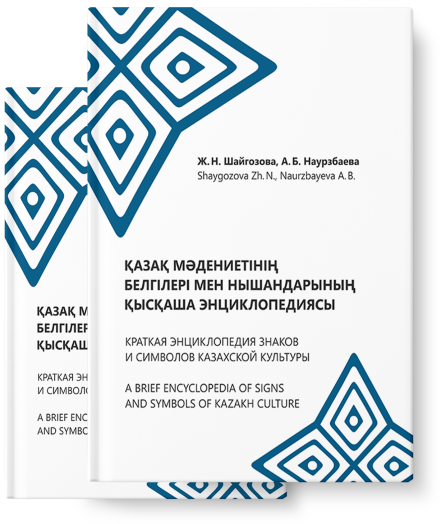
A short encyclopedia of
Signs and symbols of
Kazakh culture

Any headgear has a sacred status in traditional culture, and Kazakhs call it “üidin kūty” (kut of the family, home – the birthplace, the life force). There are several types of headgear of special significance. The universal skullcap – in Kazakh tradition the taqiya – necessarily has a round shape, repeating the symbolism of the circle.
The skullcap is a light woven or quilted headgear that was an obligatory element of the national costume of the peoples of Central Asia. The skullcap is worn by children, men and girls before marriage. It is believed that the common Turkish name “tübätai” comes from “tobe/tube/tope,” which means ” elevated” (e.g., a mountain peak). The skullcap, in turn, meant protection from evil spirits and served as a kind of symbol of obedience to God, loyalty to the traditions of ancestors, parents and elders. In traditional culture, it is still considered reprehensible for men of the older generation to go without this head covering.
The semantics of the Turkic skullcap is embellished by its decoration, many types of which are masterpieces of art and craftsmanship. Older men wore mainly taqiyas in dark colours, while young people were richly decorated and coloured in lighter colours, they wore “zer taqiya” embroidered with silk, gold or silver threads.
The ornamentation of the headgear said a lot: the social status, the approximate age and the affiliation of the wearer to a clan.
The Uzbek (Tajik) skullcap decorated with the traditional “kalampir” pattern (an image of bitter and sweet pepper) – a symbol of life and continuity of the clan – ram’s horns – a symbol of activity, strength and endurance – as well as bow-shaped elements conveying the idea of cyclicality of life.
Kazakh maiden Taqiya, richly decorated with various patterns: pearl embroidery, coral and other stones, as well as silver platelets or coins, symbolises beauty and innocence. A bundle of owl feathers, a traditional amulet, was sewn on the head or side. A girl wore her headdress until the wedding: before the wedding, a ritual was performed to say goodbye to the taqiya, a symbol of childhood and serenity. Taqiya with feathers were worn by people with special status – aqyn, sal seri and others.

